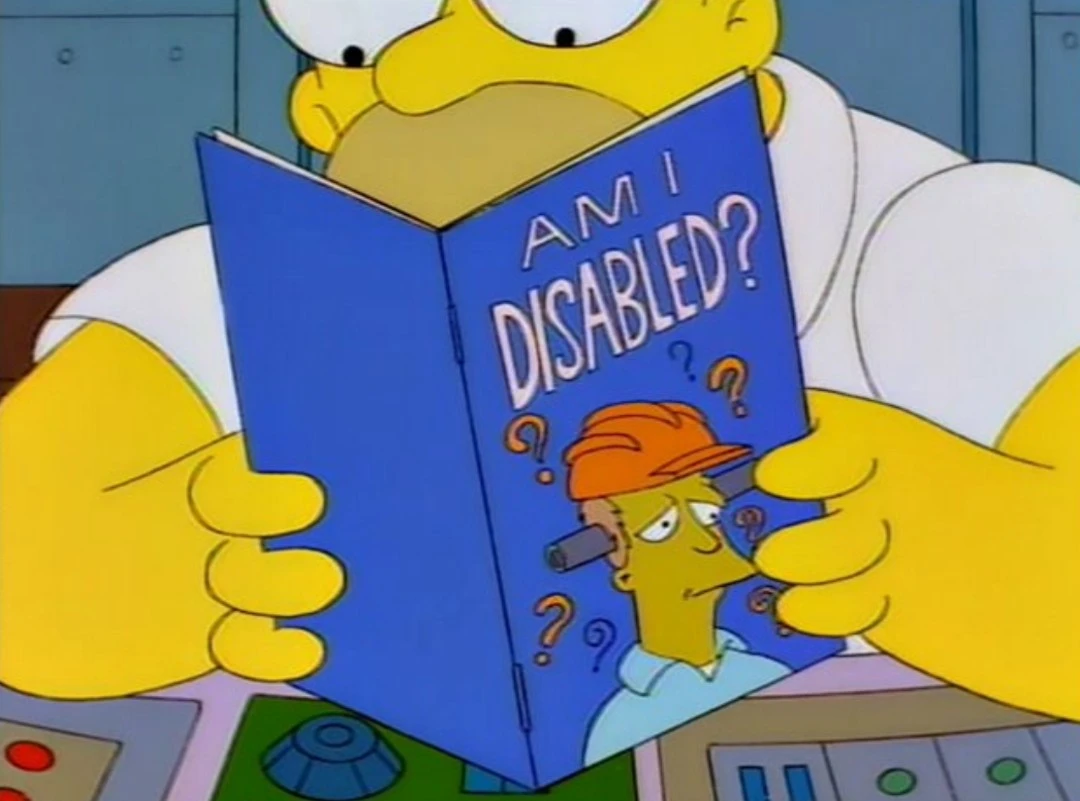whatever it is, it will be behind a paywall.
That you can only bypass with a neural link chip
X11. It will outlive humankind.
This is the only realistic answer in this thread.
Dirt cheap genetic sequencing and MRNA vaccines will be available to cure various types of cancer.
I wish. Genetic sequencing is already pretty cheap, but cancer is not some all-encompassing disease to be cured by it.
There will be custom printed MRNA vaccines that target cancers based on sequencing that cancer’s own DNA.
Does this mean we would get vaccinated against all forms of cancer? Because these are a lot. What about people who already have a cancer?
Many kinds yes, idk enough to say all. Docs take a sample of the cancer DNA, turn that into an mRNA vaccine, inject it into you, and your immune system precisely destroys the cancer.
It seems interesting for many cancers, and lifesaving for already metastasized cancers.
Only downside will be lifelong wage garnishment to The Company.
It’s not necessarily a vaccine that you get in advance. It’s simply a vaccine in that it causes your body to create antibodies against the wonky cells, they can happen after chemo or radiation and still be effective.
I think we’re past due for a major technological breakthrough in energy storage that 1) increases energy density, 2) decreases max charge/discharge time, and 3) is more sustainable than, say Lithium.
With how much R&D seems to be pouring into this right now, I have at least hope.
I remember hearing about the development of solid-state batteries a few years ago and I have been anxiously awaiting any news regarding the concept since.
There are battery banks using solid state that are shipping today!
It took about 10 years for the internet to go from academic curiosity to mainstream.
It took about 10 years from the first BlackBerry devices to iPhone/Android ubiquity.
I think VR and AI are at these points right now.
I think the big turning point for that could be the ability to run some advanced models (by today’s standards) on device. Would definitely unlock some pretty cool use cases.
I know we’re supposed to hate Apple here, but this is a big reason I’m excited about the upcoming event. I really like their path of on-device AI. I’ve been reading some of their case studies on making models work in limited memory situations and they’re already using their own soc with multiple specialized processing nodes that you can imagine being extended to support on device ai. Now let’s find out what they can deliver
Yes, Google has also moved in this direction with tensor and Gemini nano. I expect to see a lot more movement here over the next few years as there is a big financial incentive to offload all that compute cost as well.
Mass produced sodium ion batteries, even cheaper solar panels, scalable water desalination, military adoption of quantum entanglement communication, high speed rail in California, MacBooks with a touchscreen
Hopefully we’ll see AR become more common place and easily integrated with glasses. Imagine being at a gathering and you can look at someone and get their name, maybe their LinkedIn or other profile. Directions overlaid right in front of you for navigation. Going to a sports game and seeing player stats above the player. Things like that.
Sounds like a privacy nightmare honestly. Also a kind of black mirror like social point system.
Navigation is the only one that sounds neat, but also a bit brain rotting. I already don’t know where I am half the time because of navigation.
I’d like more basic things, like a floating music player, sticky notes/todo list, notifications bar or video/text, when looking at a restaurant seeing the reviews and menu with order options, looking at a product and getting more info. Just stuff that I’d need to manually look up otherwise or things that would be infinitely better without being hunched over a handheld device.
I really want historic photos overlaid on top of existing buildings. I’d love to walk down Chicago and see in real time what it looked like 100 years ago.
Actual autonomous vehicles. It certainly won’t be Tesla, and it won’t have a steering wheel.
I think road signs will have embedded codes for self driving cars. Whether it’s a local broadcast signal, a QR code, or just extra blocky letters for the computer to read easier, road signage and signals will be directed to the computer in the car, not to inform the human in the car.
Maybe much farther out in the future when autonomous vehicles are the default. That’s a lot of signage to rejigger for very little gain, while mapping and CV already handle that small part of driving quite well.
Hmm. Maybe the kind of signage I’m thinking of would only be useful for construction zones and emergency vehicles.
I imagine the FSD friendly signage will eventually get slow-rolled. That is, maybe you’ll see proactive replacement on major roads and highways, but local roads won’t be updated until the sign needs to be be replaced anyway.
One of the most amazing things about this would be to remove signs altogether. Just embed the sensor in the pavement and give the space the signs took up back to people, nature, or literally anything else.
Huge overhead highway gantries and traffic lights would be wonderful to remove, too. City sidewalks are narrow enough as is and they would be way better without 20+ft tall metal poles jutting out of the ground. Hopefully we can put trees in their place, but maybe I’m dreaming.
Ooo like higher powered rfid tags! The info could even then be relayed to the driver via the on screen display since theyre now all required.
It could be relayed inside. But in a self driving car, the driver’s seat is just a second front passenger seat
Oh wow, that does sound amazing.
I’ve thought about this idea for a long time.
Having sensors in the road (along the side and middle line) and receivers on cars would do a lot of good.
The sensors could tell the car how close it is to the side/middle. They could tell the car how close other cars are around them. They could tell the car the condition of the road surface (ex wet or icy). They could be programmed to the speed limit of the road and keep the cars moving at that speed. Probably many others uses.
The downside is building a sensor that can withstand weather, traffic, crumbling infrastructure. Also they would have to have a way to stay powered up for years. And if you made them re-programmable there is another level of security that needs to be added to them. And then there is the cost to retro-fit all the roads with these sensors and building a common receiver that could be installed on new cars.
I don’t think my idea is practical at all but it’s a cool idea
Surely there is a viable, inexpensive, simple solution. I think it would have to be a permanently programmed chip type of thing that is cheap enough that if you want to change the speed limit or lane specifications, it would be cost effective to replace all the chips along that length of road.
I think optics can make a big difference. Seeing the cameras in cars become much better so that they can read easier. But all road signage is already codified in a way that it should be relatively easy to do OCR or even matching on.
Maybe, but cars are already pretty good about reading signs.
It’s the lack of signs that’s the problem. Self-driving cars are pretty good on a well marked and signed road: if that’s all it took, we’re there. It’s the ubiquity of exceptions and edge cases that’s the problem.
My car recently did a one month trial of self-driving and it was a lot of fun. Also eye-opening. It did work really well on well-marked roads. However it also made me notice just how poorly marked most are. For example, it was great about staying centered between lane lines. However most local roads don’t paint the edge lines, or even the center line is worn off on many roads. Then the car is confused. I can’t even imagine what the car would do if everything were covered with snow, which does happen a lot around here
Yea. This is my big thing. Probably good on well traveled and maintained highways. Mostly good on city streets. It’s gonna be dog shit on a rural road.
I’m also curious how they would handle snow or other inclement weather that obstructs lane lines completely.
Server side services. Think of things like office online, Google cloud, etc and just expand on it. We already see some with server side gaming. I think it’ll be more commonplace in our day to day.
Internet enabled roads, highways. Likely won’t be commonly adopted within 10 years but I could see service providers/car companies rolling it out.
I think we’re also going to be seeing a lot of robots with new applications. Definitely military. But social and work ones as well.
Smart microwave ovens. Nobody will want them, but at least they’ll run Doom.
Their neural network will imagine a whole doom game in real-time
Actually efficient hardware and better batteries. I’m really interested in owning a laptop or mobile some day that can comfortably work for 20+ hours without being charged.
Batterie technology is fascinating and I expect big strides in the next 10 years (along with consumer generation of electricity)- to the point where people will be able to basically take their home “off grid” relatively easily.
I forget where I read this, but someone posited that the goal has always been “all day” battery. Ever since the first smartphones ,we’ve had, largely, the same battery life. It lasts most of the day and that’s good enough for most people. The secret, though, is that actually the batteries have gotten way bigger and more energy dense, it’s just that the processors and mobile radios are also more power intensive.
I suspect if you put a modern battery in a 5 yr old smartphone it would last 2+ days. But you’d have to deal with 3G radios, bad GPS, and slow performance.
I’m sure if I put a high density battery in my old eee PC, it could probably run for days.
I really hate that we’ve gotten such energy intensive applications. And honestly, I don’t think for a lot of them they have gotten much faster. They are bloated and programmers have been allowed to do that since every machine has so much extra resources now.
Depending on what you’re doing 20+ hours is already doable pretty easily on an M1 MacBook. I’m a pretty intensive internet user and I still get 10-15 hours.
There’s a japanese company working on a kidney rejuvination drug for cats that’s meant to come out next year (potential 10 year increase in average lifespan) so we’ll almost certainly have that in 10 years which will be nice.
While I think our current brute force method attempt at AI is already hitting the limits of how ‘smart’ it can be I suspect over the next few years we’ll develop far lighter models until your phone having a simulated personality is just a standard (hopefully optional) feature. They’ll probably also have an online feature to cross reference their own answers with wikipedia or something.
Deaslination is likely to get significantly better by sheer neccesity.
I like to think we’ll have higher frequency rectennas though probably not optical frequency ones.
rectennas
Don’t like the sound of that
Greetings. Fisto is programmed for your pleasure. Please assume the position. Activating main rectenna.
I think the satellite based cellular networks like ASTS is currently trying to launch will be ubiquitous.
The tech already seems good, so it’ll happen much sooner than 34, but I imagine by that point it will just be one of those things everyone takes for granted.
I can also see small autonomous drones playing a much larger role with various tasks.
You’ve heard of deep fakes he’s? Now we got real fakes.
I think the “smart” home will become more common.
I don’t mean that we’ll see smart versions of new things, but more of the basic things, like Light fixtures, smoke alarms, doorbells etc. Consumers will buy less and less of the “dumb” things until EVERYTHING has WiFi built into it.
I’ve worked in the home automation industry for over twenty five years. I’ve been programming “smart lighting” for over ten.
The “smart home” you see today is largely thanks to how cheaply things are made in china and repackaged by mega-corporations. And the consumers’ desire to do everything from their phone (with 2 day shipping). Automated lighting control has existed for over forty years. It’s been expensive because the parts are built to last for forty plus years and most of the older system were manufactured in the US. Those manufacturers are still mostly making things in the US but a lot of little bits are imported.
An average 2,500 sq ft home could do a whole automated lighting system for about five grand. That’s a lot for someone to buy (and install) from Amazon but it’s nothing if it’s bundled into your mortgage.
Nothing beats a wire. For a small apartment with a few lighting circuits, sure, spend $500 on some wireless doodads. Now you’re stuck relying on software updates and firmware updates by your router, your wireless bridge, your smart buttons, your lighting fixtures, your mobile OS, the lighting app, and maybe another app to combine everything, not to mention your “smart speaker” if you want to yelp your commands into the air. On the other hand, if you get everything from one manufacturer, it’s built on an isolated network that grants access to your mobile device and the system is self contained and essentially bulletproof until the power goes out.
Lighting is a life safety segment. You won’t pass inspection unless you can turn the lights on and off from a physical switch or button that doesn’t rely on your home wifi.
It’s up to electricians and builders and AV experts (and CEDIA) to convince future home owners that it’s worth getting this stuff installed before the home is built rather than letting them decide to buy something prone to failure on their own.
I love smart lighting. I wish everyone would invest any amount of money into it. But, if I’m reading you right, a wifi lighting world is not something I would hope to see become more commonplace than the current path of wired automated lighting. I’m in agreement with you though. It’s really sad when I walk into brand new homes that have no lighting control (or distributed audio) at all.
Am electrician, 100% with you. Relying on apps and wifi for your home is NOT worth the money you save. It’s straightforward enough for us to do the job properly, and you will be MUCH happier with the results. It will also improve resale value, which your rinky-dink wifi devices won’t. Because they’ll be obsolete.
This isn’t me saying it to drum up work. We’ve got plenty of work. I ain’t selling nothing here. Invest in an electrician for a few days and it will pay off.
Nothing beats a wire. For a small apartment with a few lighting circuits, sure, spend $500 on some wireless doodads. Now you’re stuck relying on software updates and firmware updates by your router, your wireless bridge, your smart buttons, your lighting fixtures, your mobile OS, the lighting app, and maybe another app to combine everything, not to mention your “smart speaker” if you want to yelp your commands into the air. On the other hand, if you get everything from one manufacturer, it’s built on an isolated network that grants access to your mobile device and the system is self contained and essentially bulletproof until the power goes out.
Both wireless and proprietary/single-supplier are deal-breakers for me. As such, stuff like what you install (presumably Crestron or similar) is just as worthless to me as the shit from Amazon. Basically, between surveillance capitalism and vendor lock-in, nobody in the industry wants to meet my needs. So I’m either going to have to resign myself to having a “dumb” house forever, or build the whole damn system from scratch myself with
blackjack and hookersArduinos and Home Assistant!Oh, there are some distributers with some in-the-middle gear that might be sort of accessible to “consumers”. You might have to lie and say you’re a professional. Off the top of my head, I’ve worked with almo.com and adiglobaldistribution.us and snapav.com. Still, the skills to install and program this stuff is something to acquire.
There’s nothing wrong with building it yourself other than you need to acquire all the skills to do so and source all the components yourself and figure it out on your own when it doesn’t work. If that works for you, that’s great.
Crestron and Lutron stay out of the consumer market, in part, because you need to be a licensed electrician to install components of their systems. I can tell you from experience, even with the right training and certification, it’s very easy to blow something out. And when something doesn’t work, you have them for tech support and you get a great warranty. The stuff is rock solid and works for decades. I rather buy a home with a single supplier system than one that was hobbled together. Because when I then have a problem with something or want to upgrade the system, I know who to call and what the options are.
I hate battery items, and when I can I like wired. But retrofitting a 70 year old home with all that won’t be easy or cheap. I’ve already had to redo all my outlets and run new wires.
Other disadvantages for me are:
- I have to know what I want at the beginning
- The vendor has to support or sell a specific solution for whatever device I want
- I can’t slow roll it as I can afford it
- Upgrades aren’t going to be easy or cheap.
But I am an IT director. So I know my way around networking, programming, and system/server admin. I can segment, design, and secure the networking between the devices and run whatever systems I need for automation. I’ve run Ethernet throughout the house and am not afraid of cutting holes.
I’m trying to tie in some professional systems like Dante audio instead of smart speakers. Even though that means I’ll probably need a dedicated audio server.
And I’m tying in a lot of legacy protocols too. Like artnet and DMX for a lot of the show control systems I have. It’s really great being able to use so much dissimilar stuff and be able to control it from a single dashboard.
I can also automate temporary things like holiday lights or my big Halloween displays. I end up wiring most of my cars lights to DMX controlled relays and dimmers. Add fog machines and audio cues that I can sync up together.
But I do know that I’m a nerdy edge case here.
That’s pretty much what we do (including retrofitting 200+ year old farm houses). Just replace your home server with a Crestron box. For people who want to tinker on a regular basis, we could (I have) easily build them a custom interface but you certainly fit the bill of someone who should do it themselves. You’ve chosen this as a hobby and a life long commitment.
You know what they say about plumbers… always a leaky pipe in their house. Having been in the industry for decades, the last thing I want to do when I get home from work is futz around with networking and programming. I have wireless Ikea lighting. The battery has been dead on one of my smart buttons for a month and I’m too lazy to take two minutes to swap it.
I tinker mostly during the holidays. Show control is kind of a hobby. As are haunted houses.
Otherwise, everything just works at this point. I just have a few useful automation like turning all lights off with a button press, some lights that turn on at sunset and off at sunrise, and back door lights that turn on when the garage opens and it’s after sunset.
Otherwise everything still works as a switch, well button now, without Internet or my hub. I never need to explain to someone that comes in how to use anything.
I have some shit broken, like my automation that sent one of the robot vacuums out when I leave the house doesn’t work now that I’ve tried making sure it doesn’t go if my girlfriend is still home. But low priority. The shit I care about just works. The rest is when I get to it, eventually.
Thanks for sharing your experiences! Are there any brands, guides, platforms, etc that you would recommend?
I’m getting my feet wet with Home Assistant and would love to “Do it right”!
Lutron is the most common for lighting and shades. They work closely with electricians, architects, and designers. Lutron has some consumer facing products (Caseta) that may be applicable to most people wanting to take a step into real control systems. That’s not to say they have all the capabilities you’re looking for - they stay in their lane.
Crestron is far more robust as they offer everything from lights, shades, speakers, control systems, AV distribution, etc. They’re huge in commercial too. You would need to contact an AV pro to get Crestron installed and programmed.
There’s handful of other brands you may come across (Control4, Savant) as you research your local AV installers. I don’t have as much experience with them. Both had questionable beginnings but I would assume they’re much better now.
Just make sure whoever you deal with is authorized or certified dealers and programmers. It’ll cost a bit more than people working out of their trunks - but you get what you pay for. As with all things ‘internet’, do your own research. I can suggest starting here https://cedia.org/homeowners/
Thank you!
No thanks. So-called smart devices = Internet of Shit.
No WiFi please. There are much better technologies for home automation.
Matter/Thread has the potential to make this happen. Finally a common network across both wired and local low powered mesh-based networks that’s easy to use and can do pretty much whatever anyone would need.
Lots of hype, but very slow rollout means we’re just not seeing that potential develop. You really need to use older tech as well, which keeps it from being available to non-techies
The Insteon crisis
















